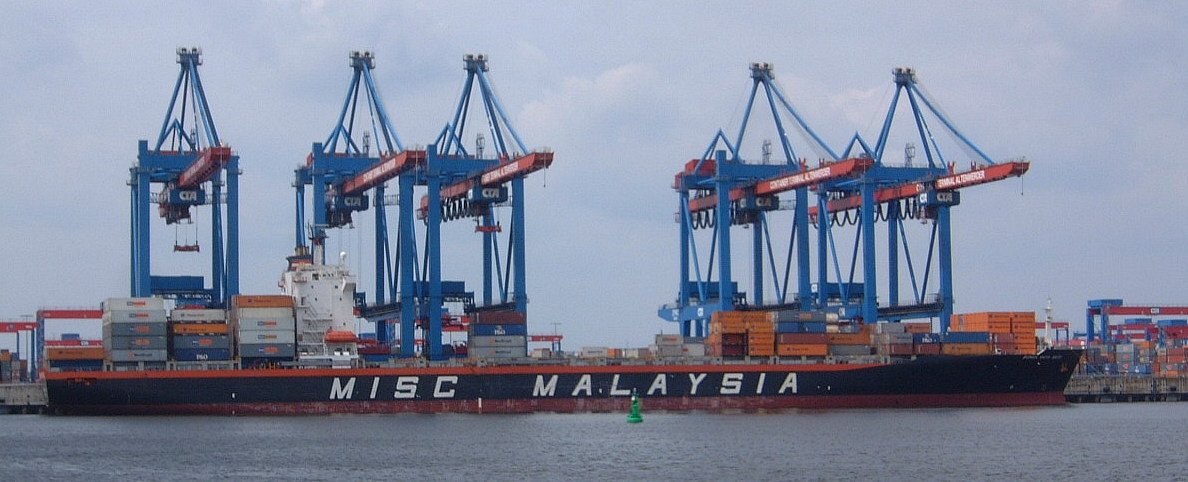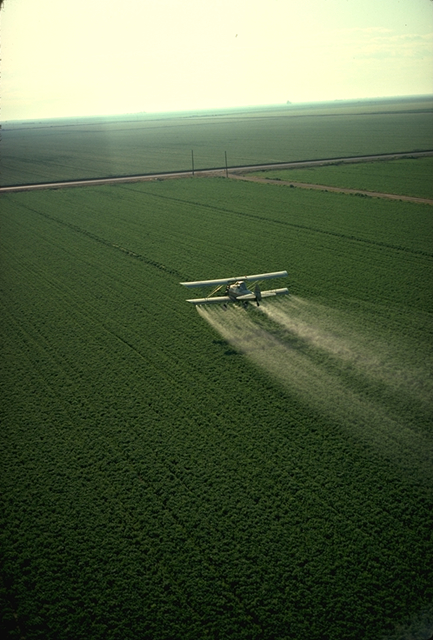|
Codex Alimentarius Commission
The is a collection of internationally recognized standards, codes of practice, guidelines, and other recommendations published by the Food and Agriculture Organization (FAO) and World Health Organization (WHO) of the United Nations relating to food, food production, food labeling, and food safety. History and governance Its name is derived from the Codex Alimentarius Austriacus. Its texts are developed and maintained by the Codex Alimentarius Commission (CAC), a body established in early November 1961 by the Food and Agriculture Organization of the United Nations (FAO). Joined by the World Health Organization (WHO) in June 1962, the CAC held its first session in Rome in October 1963. The Commission's main goals are to protect the health of consumers, to facilitate international trade, and to ensure fair practices in the international food trade.Understanding Codex', World Health Organization and the Food and Agriculture Organization of the United Nations (5th ed. Sept. 2018) ... [...More Info...] [...Related Items...] OR: [Wikipedia] [Google] [Baidu] |
Food And Agriculture Organization
The Food and Agriculture Organization of the United Nations; . (FAO) is a specialized agency of the United Nations that leads international efforts to defeat hunger and improve nutrition and food security. Its Latin motto, , translates to "let there be bread". It was founded on 16 October 1945. The FAO comprises 195 members, including 194 countries and the European Union. Its headquarters is in Rome, Italy, and it maintains regional and field offices worldwide, operating in over 130 countries. It helps governments and development agencies coordinate their activities to improve and develop agriculture, forestry, fisheries, and land and water resources. It also conducts research, provides technical assistance to projects, operates educational and training programs, and collects agricultural output, production, and development data. The FAO is governed by a biennial conference representing each member country and the European Union, which elects a 49-member executive cou ... [...More Info...] [...Related Items...] OR: [Wikipedia] [Google] [Baidu] |
Dispute Settlement In The World Trade Organization
Dispute settlement or dispute settlement system (DSS) is regarded by the World Trade Organization (WTO) as the central pillar of the multilateral international trade, trading system, and as the organization's "unique contribution to the stability of the world economy, global economy". A dispute arises when one WTO accession and membership, member country adopts a trade policy ''measure'' or takes some ''action'' that one or more fellow members consider to be a breach of WTO agreements or to be a failure to live up to obligations. By joining the WTO, member countries have agreed that if they believe fellow members are in violation of trade rules, they will use the Dispute Settlement Body, multilateral system of settling disputes instead of taking action unilaterally — this entails abiding by agreed procedures—Dispute Settlement Understanding—and respecting judgments, primarily of the Dispute Settlement Board (DSB), the WTO organ responsible for adjudication of disputes. [...More Info...] [...Related Items...] OR: [Wikipedia] [Google] [Baidu] |
Arabic Language
Arabic (, , or , ) is a Central Semitic languages, Central Semitic language of the Afroasiatic languages, Afroasiatic language family spoken primarily in the Arab world. The International Organization for Standardization (ISO) assigns language codes to 32 varieties of Arabic, including its standard form of Literary Arabic, known as Modern Standard Arabic, which is derived from Classical Arabic. This distinction exists primarily among Western linguists; Arabic speakers themselves generally do not distinguish between Modern Standard Arabic and Classical Arabic, but rather refer to both as ( "the eloquent Arabic") or simply ' (). Arabic is the List of languages by the number of countries in which they are recognized as an official language, third most widespread official language after English and French, one of six official languages of the United Nations, and the Sacred language, liturgical language of Islam. Arabic is widely taught in schools and universities around the wo ... [...More Info...] [...Related Items...] OR: [Wikipedia] [Google] [Baidu] |
Official Languages Of The United Nations
The official languages of the United Nations, are the six languages used in United Nations (UN) meetings and in which the UN writes and publishes all its official documents. In 1946, five languages were chosen as official languages of the UN: English language in England, English, French language, French, Russian language, Russian, Spanish language, Spanish, and Chinese language, Chinese. In 1973, Arabic was voted to be an additional official language. As of 2025, the official languages of the United Nations are: * English language, English (British English with Oxford spelling), in the English alphabet, English Latin alphabet * French language, French (Varieties of French, français métropolitain / langues d'oïl) in the French orthography, French Latin alphabet * Spanish language, Spanish (español / Name of the Spanish language, castellano) in the Spanish orthography, Spanish Latin alphabet * Russian language, Russian (русский / Moscow dialect, Московское пр� ... [...More Info...] [...Related Items...] OR: [Wikipedia] [Google] [Baidu] |
Certification
Certification is part of testing, inspection and certification and the provision by an independent body of written assurance (a certificate) that the product, service or system in question meets specific requirements. It is the formal attestation or confirmation of certain characteristics of an object, person, or organization. This confirmation is often, but not always, provided by some form of external review, education, assessment, or audit. Accreditation is a specific organization's process of certification. According to the U.S. National Council on Measurement in Education, a certification test is a credentialing test used to determine whether individuals are knowledgeable enough in a given occupational area to be labeled "competent to practice" in that area. As a rule, certificates must be renewed and periodically reviewed by a certifying regulatory body responsible for the validity of the certificate's assessment methods. The certifying body can be either a state authority ... [...More Info...] [...Related Items...] OR: [Wikipedia] [Google] [Baidu] |
Export
An export in international trade is a good produced in one country that is sold into another country or a service provided in one country for a national or resident of another country. The seller of such goods or the service provider is an ''exporter''; the foreign buyer is an '' importer''. Services that figure in international trade include financial, accounting and other professional services, tourism, education as well as intellectual property rights. Exportation of goods often requires the involvement of customs authorities. Firms For any firm, Global expansion strategies may include: * Franchising, * Turn Key Project, * Export, * Joint Venture, * Licensing, * Creating an owned subsidiary, * Acquisition, * Merger, etc. Exporting is mostly a strategy used by product based companies. Many manufacturing firms begin their global expansion as exporters and only later switch to another mode for serving a foreign market. Barriers There are four main types of expo ... [...More Info...] [...Related Items...] OR: [Wikipedia] [Google] [Baidu] |
Import
An importer is the receiving country in an export from the sending country. Importation and exportation are the defining financial transactions of international trade. Import is part of the International Trade which involves buying and receiving of goods or services produced in another country. The seller of such goods and services is called an exporter, while the foreign buyer is known as an importer. In international trade, the importation and exportation of goods are limited by import quotas and mandates from the customs authority. The importing and exporting jurisdictions may impose a tariff (tax) on the goods. In addition, the importation and exportation of goods are subject to trade agreements between the importing and exporting jurisdictions. Definition Imports consist of transactions in goods and services to a resident of a jurisdiction (such as a nation) from non-residents. The exact definition of imports in national accounts includes and excludes specific "borderlin ... [...More Info...] [...Related Items...] OR: [Wikipedia] [Google] [Baidu] |
Biotechnology
Biotechnology is a multidisciplinary field that involves the integration of natural sciences and Engineering Science, engineering sciences in order to achieve the application of organisms and parts thereof for products and services. Specialists in the field are known as biotechnologists. The term ''biotechnology'' was first used by Károly Ereky in 1919 to refer to the production of products from raw materials with the aid of living organisms. The core principle of biotechnology involves harnessing biological systems and organisms, such as bacteria, yeast, and plants, to perform specific tasks or produce valuable substances. Biotechnology had a significant impact on many areas of society, from medicine to agriculture to environmental science. One of the key techniques used in biotechnology is genetic engineering, which allows scientists to modify the genetic makeup of organisms to achieve desired outcomes. This can involve inserting genes from one organism into another, and con ... [...More Info...] [...Related Items...] OR: [Wikipedia] [Google] [Baidu] |
Pesticide
Pesticides are substances that are used to control pests. They include herbicides, insecticides, nematicides, fungicides, and many others (see table). The most common of these are herbicides, which account for approximately 50% of all pesticide use globally. Most pesticides are used as plant protection products (also known as crop protection products), which in general protect plants from weeds, fungi, or insects. In general, a pesticide is a chemical or biological agent (such as a virus, bacterium, or fungus) that deters, incapacitates, kills, or otherwise discourages pests. Target pests can include insects, plant pathogens, weeds, molluscs, birds, mammals, fish, nematodes (roundworms), and microbes that destroy property, cause nuisance, spread disease, or are disease vectors. Along with these benefits, pesticides also have drawbacks, such as potential toxicity to humans and other species. Definition The word pesticide derives from the Latin ''pestis'' (plagu ... [...More Info...] [...Related Items...] OR: [Wikipedia] [Google] [Baidu] |
Food Additives
Food additives are substances added to food to preserve flavor or enhance taste, appearance, or other sensory qualities. Some additives, such as vinegar ( pickling), salt ( salting), smoke (smoking) and sugar (crystallization), have been used for centuries to preserve food. This allows for longer-lasting foods, such as bacon, sweets, and wines. With the advent of ultra-processed foods in the late 20th century, many additives having both natural and artificial origin were introduced. Food additives also include substances that may be introduced to food indirectly (called "indirect additives") in the manufacturing process through packaging, storage or transport. In Europe and internationally, many additives are designated with E numbers, while in the United States, additives in amounts deemed safe for human consumption are designated as GRAS. Identification To regulate these additives and inform consumers each additive is assigned a unique number called an "E number", which ... [...More Info...] [...Related Items...] OR: [Wikipedia] [Google] [Baidu] |
Hygiene
Hygiene is a set of practices performed to preserve health. According to the World Health Organization (WHO), "Hygiene refers to conditions and practices that help to maintain health and prevent the spread of diseases." Personal hygiene refers to maintaining the body's cleanliness. Hygiene activities can be grouped into the following: home and everyday hygiene, personal hygiene, medical hygiene, sleep hygiene, and Food safety, food hygiene. Home and every day hygiene includes hand washing, respiratory hygiene, food hygiene at home, hygiene in the kitchen, hygiene in the bathroom, laundry hygiene, and medical hygiene at home. And also environmental hygiene in the society to prevent all kinds of bacterias from penetrating into our homes. Many people equate hygiene with "cleanliness", but hygiene is a broad term. It includes such personal habit choices as how frequently to take a shower or bath, wash hands, trim Nail (anatomy), fingernails, and wash clothes. It also includes atte ... [...More Info...] [...Related Items...] OR: [Wikipedia] [Google] [Baidu] |
Food Labelling Regulations
Food is any substance consumed by an organism for nutritional support. Food is usually of plant, animal, or fungal origin and contains essential nutrients such as carbohydrates, fats, proteins, vitamins, or minerals. The substance is ingested by an organism and assimilated by the organism's cells to provide energy, maintain life, or stimulate growth. Different species of animals have different feeding behaviours that satisfy the needs of their metabolisms and have evolved to fill a specific ecological niche within specific geographical contexts. Omnivorous humans are highly adaptable and have adapted to obtaining food in many different ecosystems. Humans generally use cooking to prepare food for consumption. The majority of the food energy required is supplied by the industrial food industry, which produces food through intensive agriculture and distributes it through complex food processing and food distribution systems. This system of conventional agricultur ... [...More Info...] [...Related Items...] OR: [Wikipedia] [Google] [Baidu] |









